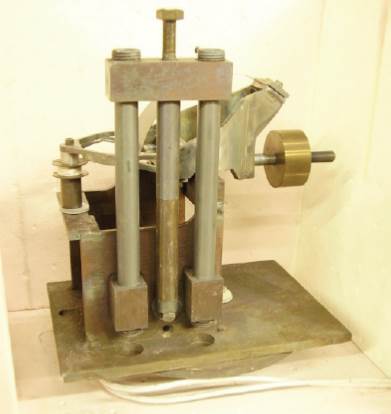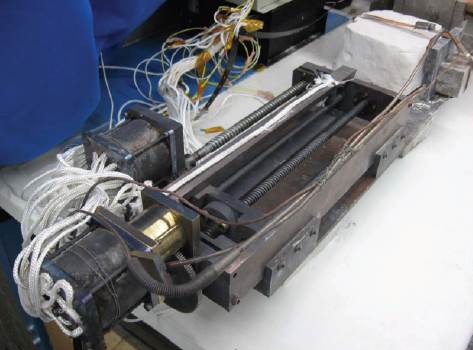Seismometer
A typical commercial seismometer such as produced by [1] is a reliable indicator of the current interests
in geophysical measurements. In [2], [3], and [4], the latest developments in Venus-ready seismographs are discussed.
The laboratory work that is discussed in [2] and [3] is shown to actually work in [4] at sustained high temperatures
and pressures that are present on the surface of Venus. The device only requires shielding from the elements. The
hardened seismograph is seen in the image below.

Venus ready Seismometer [3]
Both [4] and [5] agree that no machinery on a potential lander, not even a radioisotope thermoacoustic generator,
would pose interference issues with the seismographic readings. At most, the device needs good contact with the ground
and a wind shield.
We propose landing on Venus 5 days prior to line-of-sight surfacet-to-Earth visibility so that the probe
can use a high temperature, ceramic geared, no lubricant drill to slightly bury the seismograph in the ground. Such
a drill is already in use in industry as demonstrated in [2] and the image below.

High Temperature Drill [2]
[1] Guralp Systems Limited, "Guralp CMG-3T Broadband Seismometer," Aldermaston, United Kingdom, Issue E, August 2000.
[2] G. W. Hunter, "Long-Lived Venus Lander Technologies: A Brief Discussion Of
Technologies Relevant to Long-lived Landers For Venus Exploration," presented at
the Seventh Meeting of the Venus Exploration and Analysis Group (VEXAG), NASA Glenn Research Center, Cleveland, OH, 2009.
[3] G. W. Hunter, et al., "Discussion of Venus Seismometry," presented at
the Eigth Meeting of the Venus Exploration and Analysis Group (VEXAG), NASA Glenn Research Center, Cleveland, OH, 2010.
[4] G. W. Hunter, G. E. Ponchak, R. W. Dyson, G. M. Beheim, M. C. Scardelletti, R. D. Meredith,
et al., "Development of a High Temperature Venus Seismometer and Extreme Environment Testing
Chamber," presented at the International Workshop on Instrumentation for Planetary Missions
(2012), Greenbelt, Maryland, 2012.
[5] G. A. Landis and K. C. Mellott, "Venus Surface Power and Cooling Systems," Acta Astronautica, vol. 61, pp. 995-1001, 2007.